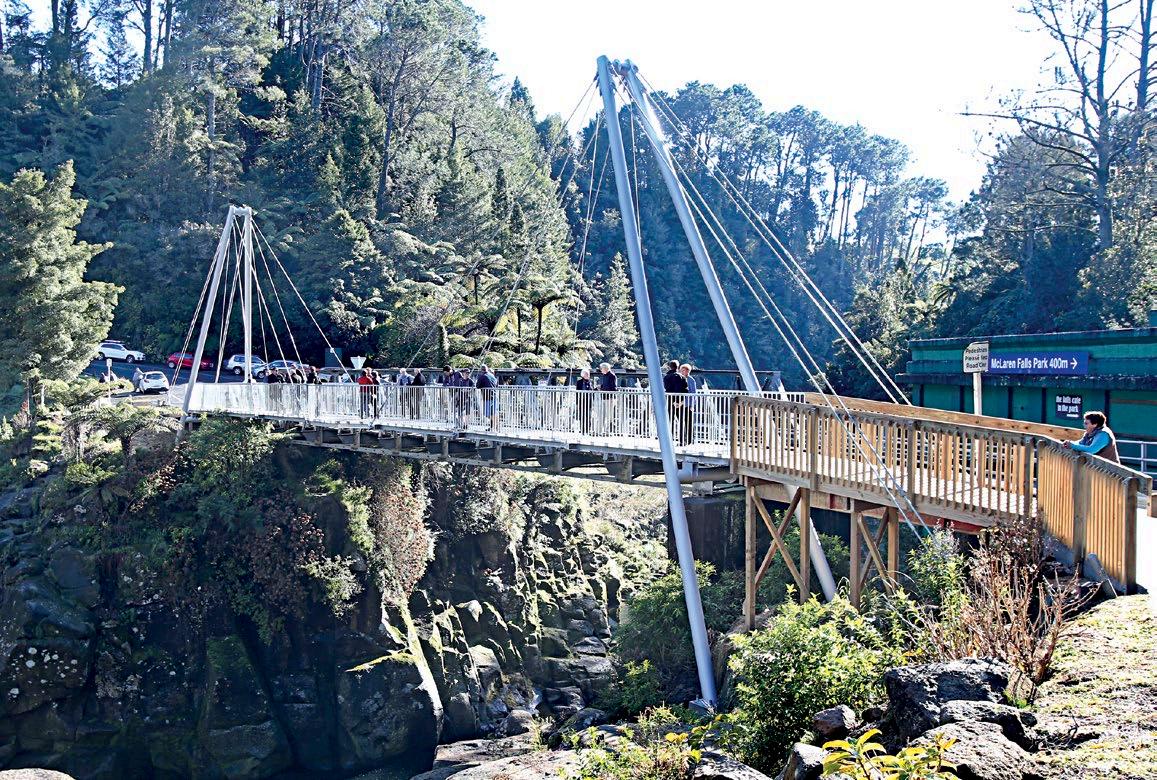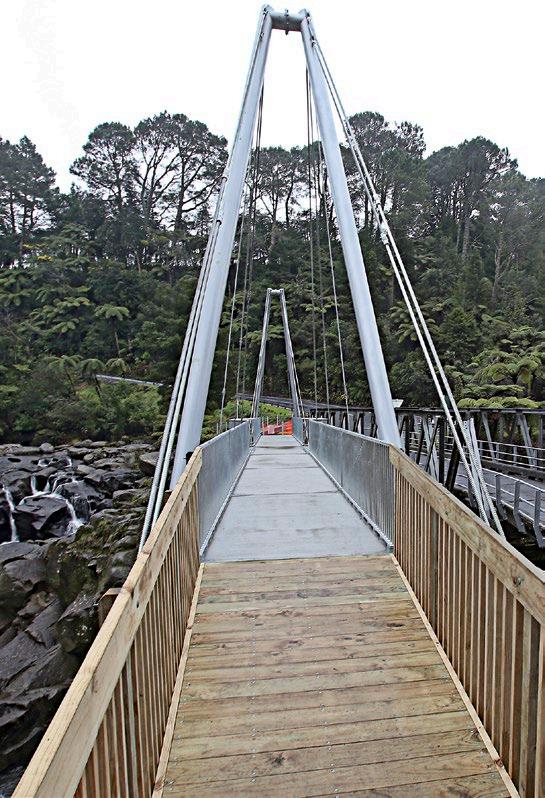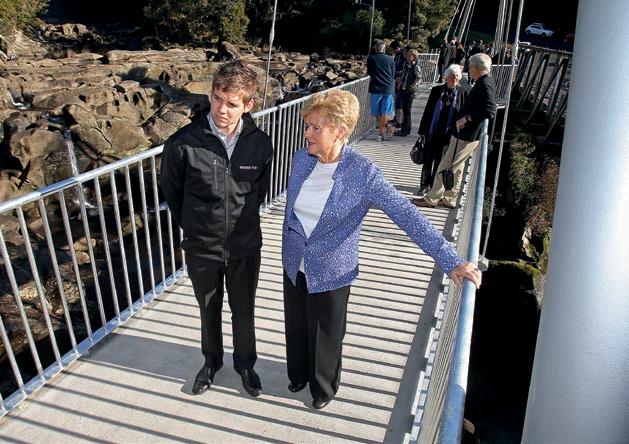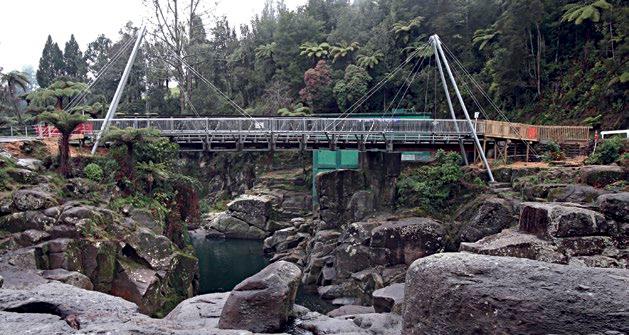
3 minute read
BridgeIT New Zealand
BUILDING A BRIDGE
between public safety and council budgets
Advertisement
Since 2011, concerned Bay of Plenty residents have been campaigning for a new pedestrian bridge over McLaren Falls, located between Tauranga City and the summit of the Kaimai Range.
1CONSTRUCTION EXCELLENCE AWARDS 2015 WINNER CATEGORY 1
PROJECT: McLaren Falls Pedestrian Bridge, Bay of Plenty CONTRACTORS: Bridge It and Tiaki Engineering Once solely the stomping ground of ‘in-the-know’ kayakers, swimmers and picnickers, tourists have flocked to the McLaren Falls in droves – especially after Lonely Planet described the area as a ‘must see’ destination.
In the summertime it was believed that approximately 1000 vehicles used to cross the old, single-lane, steel truss road bridge that led to the waterfalls. Right next to them, with a 10 metre drop on either side, were pedestrians also making their way to the attractions beyond. With the noise of the falls muffling the sounds of cars’ engines, it was a dangerous and congested spot.
Complicating an already complicated issue was the fact that the bridge also attracted thrill-seeking bridge jumpers. All in all, the site was a recipe for disaster. It had already been the scene of numerous injuries and a fatality (in 1995 when a man jumped off the bridge).
Upgrading the bridge became a priority for many – the biggest pushes coming from the McLaren Falls Environmental Enhancement Group and the Western Bay of Plenty District Council (WBOPDC).
Unfortunately, however, existing budgets did not meet collective desires, and solutions to upgrade the bridge



often exceeded half a million dollars, far beyond the council’s allocated budget.
That’s when Bridge It (BINZ) and Tiaki Engineering entered the picture with a $250,000 solution. Impressed by their design idea and construction experience, the council gave the project the go-ahead and it was built between March and August 2014.
The design is a lightweight, 35-metre suspension bridge alongside the existing one-way bridge. Look at it today and you’ll see it consists of two independent towers constructed from steel pipe and seven prefabricated concrete panels, with timber walkways up to the bridge deck. Not only is this suspension bridge the safest option, it complements the existing steel road bridge and matches the surrounding infrastructure.
When considered in light of the location’s difficult and environmentally-sensitive area, and the winning approval it has subsequently received from a scrutinising public, it’s a remarkable engineering feat by all accounts.
Project manager Campbell Upperton says this is BINZ’s biggest and most complex, clear span bridge to date.
“The existing site was very tight with minimal room for materials and equipment,” he says.
“It was also imperative to the public the road be left open for the majority of the project as it was a main arterial route for the school bus and commuters, not to mention main access for Fonterra trucks doing daily pickups. This meant planning and timing was vital on this project.”
For the entire construction, the road could only be closed for a maximum of three days. And, from 8.30am till 5pm, all equipment had to be set up and then packed up. This naturally meant the entire structure had to be prefabricated.
“Thorough planning prior to on-site construction meant we were able to manage the complexities well. The steel structure was fully assembled at the workshop based in Katikati. This included fabricating all the towers, bracing elements and concrete panel,” says Campbell.
“Ultimately we and Tiaki wanted to design a structure with a point of difference. The towers on a suspension bridge are typically vertical. Leaning those in at opposing ends gave the bridge an elegant and more modern look.
“Tying into the existing road bridge was also a factor. Often when you place two large structures in such close proximity one can diminish the other’s aesthetics. By designing the structure using predominantly steel triangulations the structure harmonises well with the steel truss road bridge running parallel.”
Provided basic maintenance inspections are routinely carried out, the lifespan of the completed product should be in excess of 100 years – proving good value for council spend and an overall safer McLaren Falls. l










